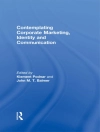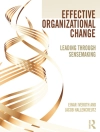A strong point in this book is its opening extensive review of creativity in organizations and professions. . . including helpful tabulations of articles that identify the motives, expectations, emotions, means, and opportunities that lead to creative acts. . . . it can provide valuable insights and encouragement to scholars and practitioners who are concerned with developing and tapping creativity in organizations. . . . Management professors and graduate students will find the book helpful. . . . –G. David Hughes in Journal of Product Innovation Management ‘This book definitely will be appropriate for class use in any setting focused on creativity in organizations. Presumably, these would be specialized upper-division, MBA, or Ph.D. electives. If you are interested in the topic of creativity in organizations, this is the book you must read. It is on the frontiers, and it provides a beacon for future scholarly progress on this topic because of its emphasis on how the organizational setting affects the creative process in the world of work.’ –Lyman Porter, University of California, Irvine ‘The book is itself a creative approach to creativity. The editors have attracted a talented and well-respected group of academic contributors. The message that we should abandon the romantic but flawed notion that creativity is principally the product of extraordinary individual acts is delivered forcefully, as is the companion notion that organizational contexts are the real seedbeds of creative behavior.’ –John R. Kimberly, Henry Bower Professor, The Wharton School, University of Pennsylvania ‘This is one of the better collections of information about creativity because it is data based, and it provides a useful comparison and contrast of conceptual and practical aspects. By clearly describing the benefits and problems associated with the topics, Creative Action in Organizations obviously practices what it preaches. I would recommend that it be used as a textbook for a graduate-level business course, particularly for an MBA program. In addition, I also recommend that it be used as a text reference for industrial ′training & development′ programs targeted at teaching employees how to develop new businesses, improve existing processes, or become better leaders (viz., corporate leadership development programs).’ –Tom Wojcik, Manager, Office of Innovation, Hoechst Celanese Corporation Between the trade deficit, mergers, and the recession, the topic of creativity in organizations has become one of increasing importance. How does a company retool or refine its product with foreign and, often, less costly competition? How does human resources find creative solutions to budgeting, product development, marketing, and training? With pithy and engaging chapters from leading researchers and figures in business, government, and academia, Creative Action in Organizations explores the factors that are critical to the development and promotion of creativity to develop a revised view that is grounded in experience. This volume begins with a literature review (written as a mystery to be solved), followed by essays from researchers (Part II) and practitioners (Part III). Using the chapters as ‘data, ‘ the editors conclude with a content-analysis that presents a look at the most significant themes and offers a framework for conceptualizing creativity in organizations. This profound and fascinating volume is essential for students, professionals, and researchers in management and organization studies, public administration, public policy, evaluation, and psychology, as well as libraries in the above areas.
Jadual kandungan
PART ONE: CONTEMPLATING CREATIVE ACTION IN ORGANIZATIONS
Multiple Visions and Multiple Voices – Cameron M Ford and Dennis A Gioia
Academic and Practitioner Conceptions of Creativity in Organizations
Creativity is a Mystery – Cameron M Ford
Clues from the Investigators′ Notebooks
PART TWO: IVORY TOWER VISIONS
Boogie down Wonderland – Jay A Conger
Creativity and Visionary Leadership
Managing Creativity – Richard W Woodman
Creativity and Entrepreneurship – Harry Nystrom
Creative Values and Creative Visions in Teams at Work – Michael A West
Discovering the Unknowable, Managing the Unmanageable – Teresa M Amabile
Individual Creativity and Organizational Innovation – Nigel King
An Uncertain Link
Creativity as Heroic – Dean Keith Simonton
Risk, Success, Failure, and Acclaim
Creativity – Daniel J Brass
It′s All in Your Social Network
The Role of Collaboration in Creativity – Nirma Kl Sethia
How Organizations Channel Creativity – William H Starbuck
Promoting Creativity in Organizations – Edwin A Locke and Shelley A Kirkpatrick
The Many Facets of Creativity – Peter J Frost
Is Your Creative Organization Innovative? – Fariborz Damanpour
Training Creativity in the Corporation – Robert W Weisberg
The View from the Psychological Laboratory
Q: Does Feedback Enhance or Inhibit Creativity in Organizations? A: Yes! – James L Farr
Everything New under the Gun – Connie J G Gersick
Creativity and Deadlines
Creativity Training and Hemispheric Function – Craig C Lundberg
Bringing the Left Brain Back In
Management of Cultural Innovations – Dag Björkengren
Why No One Really Wants Creativity – Barry M Staw
Shifting the Focus from Individual to Organizational Creativity – Mihaly Csikszentmihalyi and Keith Sawyer
Ten Tips toward Creativity in the Workplace – Robert J Sternberg and Todd I Lubart
Creative Post-Processing – Kristian Kreiner and Majken Schultz
On Making Turbulence Valuable
Creativity and the Aesthetics of Imperfection – Karl E Weick
PART THREE: REAL WORLD VOICES
The Changing Face of Creativity – F Ben Jones
Corporate America – Pedro Cuatrecasas
Creativity Held Hostage
Coaching Your Way to Creativity – Russell C Ford
Creating a Creativity Revolution – Delbert H Jacobs
Creativity in a Large Company – Alexander Mac Lachlan
All You Have to Do is Ask for It
Creativity by Decree – A New Approach – Isaac R Barpal
Creativity and Innovation – Philip X Masciantonio
Keys for Preventing Environmental Gridlock
Creativity in Government – Wellington E Webb
The Challenge of Reinventing State Government – John Engler
Creativity Today – George Heard
Are You Creating Solutions or Problems? – R Larry Wuench
Organizing for Innovation – Thoralf Ulrik Qvale
From Individual Creativity to Learning Networks
Principle-Based Creativity – Timothy F Price
Prompting Individual Initiative in Large Organizations
Membranes for Gas Separation – Walter L Robb
A Case Study in Creativity
Why Do You Have to Go `Off-Campus′ to Get Creative? – Norman P Findley
The Pro-Team – Karl-Erik Sveiby
Solving the Dilemma of Organized Creativity in Production
Fostering Creativity in Large Organizations – Carole F St Mark
Creativity at Woolworth Corporation – C Jackson Gray
Acquiring and Managing Creative Talent – Norman E Johnson
Creativity through Self-Appraisal – F E Bailey and James R Bailey
Organizing for Creativity – Terry O′Connor
Ideas Dancing in the Human Being – Robert Michael Burnside
Gee Whiz! – So What? – Alan G Chynoweth
PART FOUR: UNDERSTANDING AND INFLUENCING CREATIVITY IN ORGANIZATIONS
Contrasts and Convergences in Creativity – Dennis A Gioia
Themes in Academic and Practitioner Views
Striking Inspirational Sparks and Fanning Creative Flames – Cameron M Ford
A Multi-Domain Model of Creative Action Taking
Guidelines for Creative Action Taking in Organizations – Cameron M Ford and Dennis A Gioia












